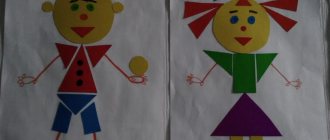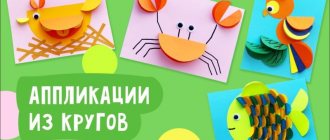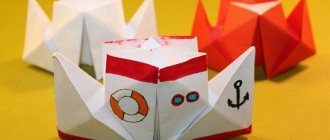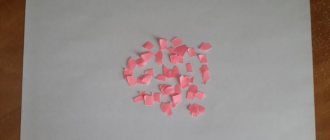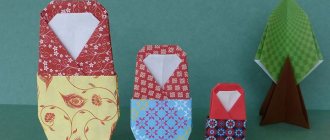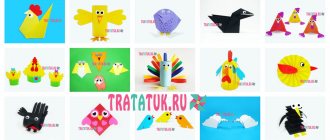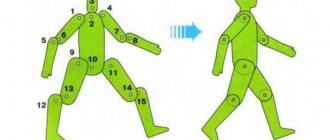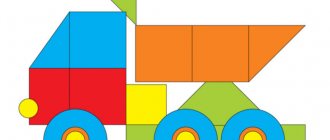Progress of the lesson:
Children enter the group and greet the guests.
Educator:
Children, look how smart our group is today, and it is decorated with beautiful scarves. Listen to a short poem about a scarf:
On a white background there are beautiful roses, lilies, poppies, daisies, snowdrops. They are tied around girls' heads. Cunning eyes, gentle faces.
In the old days, all women in Rus' wore headscarves. They were either simply thrown over the head or shoulders, or tied in a knot under the chin. The scarves were silk, muslin, brocade, decorated in the corners or throughout the entire field with a floral pattern. A scarf is a woman’s companion throughout her life. It has always been considered the best gift. Pavlovo-posad shawls were, and still are, famous throughout Russia. In the town of Pavlov Posad near Moscow, the original tradition of hand-printed scarves still continues. The main advantage of these products is the elegance of lush and varied patterns from bouquets of bright roses or garlands on a black, red, white or other background, completed with fringe. Children look at the scarves and share their impressions.
Children, look at the scarf we have here. Children come up to the table where the scarf without a pattern lies and examine it.
What scarf? What's missing from it? Where is the pattern on the scarf?
Russian folk music sounds (loudly), the Galya doll enters (the music gradually fades away). Hello children. How smart you are, how beautiful it is in your group. My name is Galya. What's your name? (children say their names).
Educator:
Galya, why are you so sad? Maybe something happened to you?
Galya:
I have a problem, I lost my new handkerchief, I can’t find it anywhere. You haven't seen my handkerchief. It's so blue with beautiful flowers.
Educator:
No, Galya, we have a lot of scarves, but we don’t have yours. Would you like us to make you a new, beautiful scarf? - Really want to! “Then stay with us and see how we work.” Children, let's make a beautiful scarf as a gift for the Gala doll.
The children sit at the tables.
October
Lesson 12. Drawing “Golden Autumn”
Program content.
Teach children to depict autumn. Practice drawing a tree, trunk, thin branches, autumn foliage. Strengthen technical skills in painting with paints (dip the brush with all its bristles into a jar of paint, remove an extra drop on the edge of the jar, rinse the brush well in water before adding another paint, blot it on a soft cloth or paper napkin, etc.). Lead children to figurative transmission of phenomena. Foster independence and creativity. Induce a feeling of joy from bright, beautiful drawings.
Lesson 13. Modeling “Mushrooms”
Program content.
Strengthen children's ability to sculpt familiar objects, using previously learned sculpting techniques (rolling clay with straight and circular movements, flattening with palms, sculpting with fingers) to refine the shape. Lead to a figurative assessment of work.
Lesson 14. Drawing “Fairytale tree”
Program content.
Teach children to create a fairy-tale image in a drawing. Practice the ability to convey the correct structure of a tree. Learn to paint. Develop imagination, creativity, speech.
Lesson 15. Application “Decoration of a handkerchief”
Program content.
Teach children to identify the corners and sides of a square. Reinforce knowledge of round, square and triangular shapes. Practice choosing color combinations. Learn to transform shapes by cutting a square into triangles, a circle into semicircles. Develop compositional skills and color perception.
Program content.
Teach children to make a simple pattern from elements of folk ornament on a strip of paper. Develop color perception, figurative ideas, creativity, imagination.
Lesson 17. Modeling “Treats for dolls”
Program content.
To develop children's imaginative ideas and the ability to choose the content of an image. Learn to sculpt a selected object using previously learned techniques. Continue to develop the ability to work accurately. To cultivate the desire to do something for others, to develop the ability to combine the results of one’s activities with the work of peers.
Lesson 18. Application “Boats float on the river”
(“Fishing boats went to sea”, “Yachts on the lake”)
Program content.
Teach children to create images of objects by cutting off the corners of rectangles. Strengthen the ability to create a beautiful composition and carefully paste images.
Lesson 19. Modeling “Fish”
Program content.
To consolidate knowledge of techniques for making oval-shaped objects (rolling with straight movements of the palms, sculpting with fingers). Reinforce the techniques of pulling and flattening while conveying the characteristic features of the fish. Teach children to use a stack to represent the scales covering the body of a fish.
Lesson 20. Drawing with paints “Simple and golden eggs”
Program content.
To consolidate knowledge of the oval shape, the concepts of “blunt” and “sharp”. Continue teaching the technique of drawing an oval shape. Train children in the ability to carefully paint over drawings. Lead to figurative expression of content. Develop imagination.
Lesson 21. Modeling “Make whatever toy you want as a gift to a friend (brother, sister)”
Program content.
Continue to develop imagery, imagination and creativity. To consolidate the ability to use a variety of sculpting techniques learned earlier when creating an image. Cultivate attention to other children, a desire to take care of them.
On the topic: methodological developments, presentations and notes
Summary of continuous educational activities on the development of cognitive activity of children of middle preschool age
Goal. Development of cognitive abilities of children of middle preschool age. Tasks for the development of cognitive abilities: Development of perception. Development of attention. Development of comparison operations. Development of…
Additional education program of artistic and aesthetic orientation “Workshop of Miracles” for children of the middle group
The additional education program contains an explanatory note and detailed thematic planning....
Summary of continuous educational activities on speech development for children of the secondary group “Zayushkina Izbushka”
Summary of continuous educational activities on speech development for children of the secondary group “Zayushkina Izbushka”...
Maria Negaychuk
Lesson on applique “Let’s decorate handkerchiefs”
Goal: To develop the skill of using a handkerchief
. Teach children to
Cover your mouth with a handkerchief
if anyone is
near - turn away. Continue to improve your glue use skills. Learn to paste finished images onto paper, creating a beautiful pattern.
Summary of a lesson on appliqué in the middle group on the topic Decorating handkerchiefs
Lesson notes on application. Topic: “Decorating a handkerchief.” Type: on the topic - according to plan. Type: decorative. Goal: Development of children's constructive abilities. Objectives: • Improve knowledge of round, square and triangular shapes. • Exercise children in identifying the corners, sides of a square and a circle. • Learn to transform shapes by cutting a square into triangles, a circle into semicircles. • Teach children to use scissors carefully. • Develop the ability to correlate your actions with the actions of an adult. Materials for the lesson: Ready-made circles, squares, glue, tassels, oilcloths, napkins, work samples, carrots. Preliminary work: Examination of decorative items with a simple pattern. Vocabulary work: activation of adjectives - neat, wonderful, beautiful, white, elegant. Problematic question: How to help the bunny make elegant scarves? Progress of the lesson: Teacher: - Guys, today I came to the group, and there was a bunny sitting on a chair. And he told me that his bunnie friends invited him to his birthday. He decided to give them these handkerchiefs. — Are the scarves fancy? (no, not elegant) What needs to be done to make them bright, elegant, festive? (decorate them). - Do you hear, bunny, you need to decorate the scarves with different patterns, then they will immediately become elegant and festive. Guys, how can you help the bunny make fancy scarves? (help decorate). - Please go to the tables (children sit at the tables). - What shape is this figure? (square). What is it called? (square) And this one? (circle). - How do they differ from each other? (a square has corners, but a circle does not; a circle rolls, but a square does not). - Indeed, a square has corners and has four sides, but a circle has no corners and only one side (hand examination). - Guys, look carefully at how you can cut a square to make two triangles. You need to cut the square diagonally from corner to corner. And the circle can be cut in half (in diameter) to get two semicircles. - Who will come to the board and show us how to cut a square? - Who will show you how to cut a circle? (showing children) - Guys, I have decorated scarves, look how different they are. This handkerchief has a circle in the middle, and triangles in the corners, and this handkerchief has a square in the middle, and half circles in the corners. — Before we start cutting out and decorating scarves, let's train our fingers. FINGER GYMNASTICS. To visit the big finger Came straight to the house Index and middle, Nameless and last Little finger of the little ones Knocked on the threshold Together fingers are friends You can’t live without each other. - And now, using scissors, we will cut the circles in half, and the squares from corner to corner - diagonally. Don't forget to take the scissors correctly and make a slight movement in the air several times: open, close the blade (children cut). Let's try! - Decorate your handkerchief with triangles, squares, circles and half circles, but do not glue them, otherwise you suddenly want to change something in it. (The teacher approaches the children and examines the patterns). - Now take the tassels, put a little glue on them and glue the cut out shapes to the handkerchiefs to make a pattern. Glue carefully, carefully, so that the work turns out beautiful and elegant. (Children glue). - Look how we worked together, what wonderful work you did. Let's look at them together? What an interesting job Arina did. Everything is glued very neatly. Just a wonderful scarf. (consider all works). — Bunny, I would like to thank you for your help in decorating the scarves. Now he will happily go to the bunnies' birthday party. What kind of scarves did you make? (elegant, beautiful, wonderful). — What was difficult for you to do in class today? And you? And you? - Guys, it’s time for the bunny to leave, he really liked our visit and he gives you a carrot.
